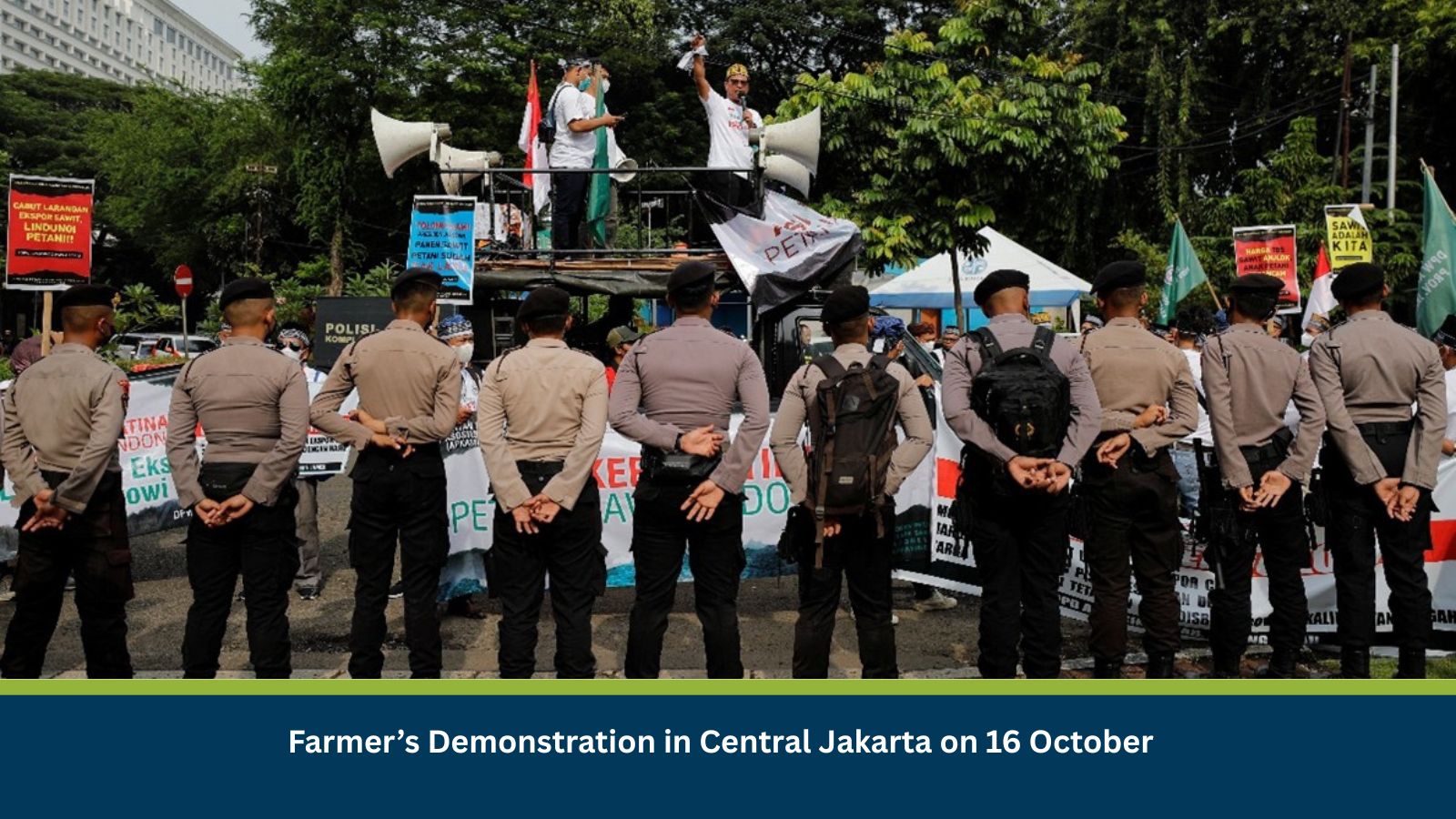What is Risk Analysis in the Context of Civil Disturbance Events
Civil disturbance risk analysis assesses how public gatherings, protests, and crowd-control measures affect safety, mobility, and business continuity. In Jakarta, demonstrations near state institutions (Istana Negara, DPR/MPR) are frequent and typically single day, creating predictable pressure on transport networks and commercial activity in the city core.
Executive Summary
- Date of Incident: 16 October 2025
- Location: Central Jakarta, Jakarta, Indonesia
- Risk Category: Civil Disturbance
- Severity Score: 3/5
- Confidence Level: 85%
A farmer’s protest assembled in front of the Presidential Palace with 1,485 joint security personnel deployed. Historical patterns indicate contained, single-day disruptions, with residual effects (traffic, security perimeters) lasting up to forty-eight hours. Primary risks: road closures, transit diversions, and localized operational delays.
Current Updates
Crowds gathered in front of Istana Negara through the day. Security forces implemented standard crowd and traffic management around Monas and adjacent corridors. No prolonged violence reported; operations focused on maintaining perimeters and flow.
Known Hotspots and Sensitive Areas
- High impact: Istana Negara frontage, Medan Merdeka Utara/Selatan, Veteran.
- Medium impact: Monas perimeter, Gambir Station approaches, MH Thamrin segments.
- Low impact: Government complexes farther south (DPR/MPR) unless spillover occurs. Recurrence risk is moderate on working days with aligned causes.
Impact on Transportation and Services
Road closures and contraflow near the Palace caused queuing along Medan Merdeka and feeder arterials, with knock-on delays to TransJakarta routes crossing the area. Ride-hailing/taxis experienced surge pricing and elongated pick-up times. Access constraints slowed last-mile deliveries and in-person services for offices and retail in the CBD fringe.
Recommended Actions
- Employee safety & mobility: Enable remote work; stagger shifts; push real-time rerouting via official traffic channels.
- Asset protection: Secure entrances, restrict non-essential visits, and adjust delivery windows outside peak protest hours.
- Continuity operations: Prioritize critical workflows, pre-position contingencies for client commitments, and validate remote access capacity.
- Situational awareness: Establish an IMT to monitor police and traffic advisories; maintain a staff check-in and emergency contact cascade.
Multidimensional Impact
Citywide traffic already under strain may face extended delays, marginally slowing emergency response to unrelated incidents and increasing same-day logistics costs. Public sentiment on agricultural policy may prompt copycat gatherings, though sustained unrest is unlikely.
Emergency Contacts
- Police: 110
- Fire: 113
- Ambulance: 118 / 119
- National Emergency: 112
- Local Channels: TMC Polda Metro Jaya; DKI Jakarta Provincial updates
Final Thoughts
The trajectory indicates a short-lived, moderate disruption expected to taper within one to two days. Key watchpoints include spillovers toward DPR/MPR, after-hours assemblies, and potential counter-protests that may extend disruptions. Organizations should maintain agile commute policies, reinforce perimeter security, and leverage real-time intelligence tools to ensure business continuity amid recurring Jakarta protests and road closures.
Stay ahead of operational risks with real-time alerts, scenario modeling, and expert advisories with datasurfr’s Predict. Start your 14-day free trial of Datasurfr’s Risk Intelligence Platform today.






